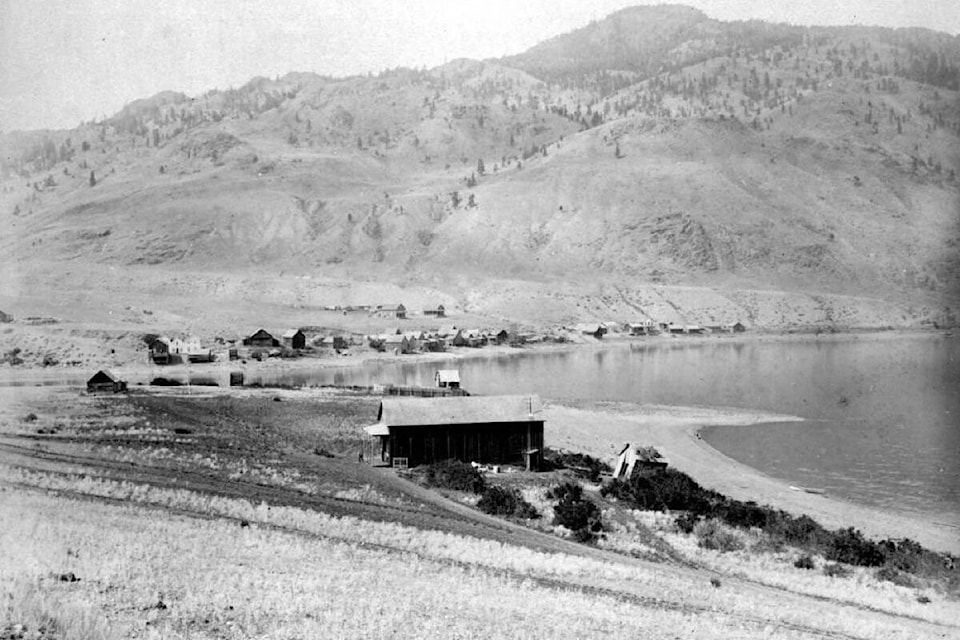Most people, upon learning that a town was going to be named after them, would gratefully accept the honour, no matter how small or seemingly insignificant the town might appear to be.
William Cornelius Van Horne — general manager of the Canadian Pacific Railway from 1882, and a driving force behind the rapid completion of the rail line between eastern Canada and the west coast — was not “most people”. In 1885, as his private train travelled the final link of the CPR between Kamloops and the coast, he saw first-hand the site of the community that had, just before CPR construction reached the area in 1882, pre-emptively been registered as Van Horne. It was only a mile or so from an existing settlement, and that one look at the area was enough to make him decline the offer, which is why the town at the western end of Kamloops Lake is still called Savona, and not Van Horne.
I mean no disrespect to the good people of Savona, which today is a lovely and peaceful community of several hundred people. However, when Van Horne came through in 1885, there was very little on the site of the town that was to bear his name except a few buildings connected with the railway, including commissary stores. Across the western end of Kamloops Lake, on the northern shore, was the small community called Savona, named after its first European inhabitant, a settler named François Saveneux.
Saveneux — whose surname was rapidly anglicized to Savona — came to the area in 1858. A Hudson’s Bay Company fort had been established at Kamloops, and the route along the lake was an important part of the fur brigade trail. With the discovery of gold along the Fraser River in 1858, and subsequent rush of gold miners to that region and then the goldfields of the Cariboo shortly thereafter, the route was of even more importance, since many people coming from the east used it.
The HBC wanted a wharf and warehouse at the western end of Kamloops Lake, and Donald McLean of the Hudson’s Bay Company in Kamloops wrote to Governor James Douglas in January 1859, recommending Saveneux for a position at the new site. “He is a master of the French, Spanish, and Italian languages, and would be willing to enter into the employ of the Government should his services be required as an Interpreter. He writes the above languages, as well as speaking them.”
McLean indicated that Saveneux came from Corsica, a French island in the Mediterranean that has close connections with Italy. Another source states that Saveneux came from the city of Savona in Italy, directly north of Corsica and west of Genoa. Either way, his facility with languages was clearly important, given the many European settlers who were making their way across the ocean to the west coast of North America.
It was not long after Mclean wrote to Douglas that Saveneux and his family took up residence at a site on the northwestern shore of the lake. The fur trade route — like Highway 1 today — followed the south shore of the lake to its western end, where travellers had to cross the Thompson River, issuing from the lake “as a broad deep noble-looking river,” as The Revd. George M. Grant described it in his 1873 book Ocean to Ocean, which described Sandford Fleming’s expedition through Canada in 1872 in search of the best route for the CPR.
Prior to 1860, travellers were taken across the river by local First Nations people using small boats. When Saveneux arrived, he established a cable ferry there, which was able to accommodate foot passengers and wagons. It was described as a very important crossing, with hundreds of pack animals, mules, and cayuses soon streaming towards the goldfields via the fur brigade trail, which met up in Cache Creek with the Cariboo Waggon Road from Yale that was built in 1862.
Beef cattle were also on their way to the Cariboo from the Kamloops area (in Ocean to Ocean Grant sings the praises of the local cattle, writing that “‘Turtle soup out of a gold spoon’ is meagre fare compared to Kamloops beef”). The ferry could not accommodate them, and an account in the Ashcroft Journal in August 1929 by editor R.D. Cumming notes that “many thousands” of cattle forded the Thompson at the spot: “By the time they reached here they were pretty well broken in as regards wading and swimming streams and rivers. It was a sight to see 5,500 head of cattle swimming the river with no losses and very little trouble. Experienced cowboys in charge knew what to do.”
The small settlement on the northwestern side of the lake soon became known as Savona’s Ferry, or simply Savona’s, as Grant called it in 1872. Alas, François Saveneux had little time to enjoy the fruits of his labours, or any prosperity from the increase in traffic along the route; he died in 1862 (some reports says 1865), and his widow took over the running of the ferry across the Thompson, managing the service until 1870, when it was acquired by the government. In the meantime, a new form of transport had started on Kamloops Lake, with Savona a key part of the equation.
Next time: Steam comes to Savona
editorial@accjournal.ca
Like us on Facebook and follow us on Twitter
